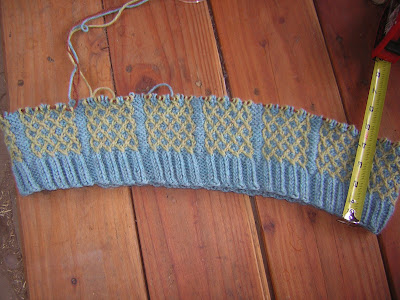 I bought a new shirt pattern on-line which looked pretty nice, it was not inexpensive at $19.95 but I thought, hey, it says industry techniques etc. from Islander sewing patterns. This pattern is definitely not for beginners, and even people who know a thing or two about shirt making are going to find some of the instructions a little unclear, but, you can always spend even more money buying the videos that will clarify it for you. The inset pocket, as one example, is made of two pieces of fabric, one a 1/4 inch longer than the other. Nowhere in the instructions is it mentioned which piece to use where, I made a guess, it turned out to be a good guess. a nice feature but an example of the the poorly written instructions. Nancy Pray, the designer of the pattern does include a tip, buy the video.
I bought a new shirt pattern on-line which looked pretty nice, it was not inexpensive at $19.95 but I thought, hey, it says industry techniques etc. from Islander sewing patterns. This pattern is definitely not for beginners, and even people who know a thing or two about shirt making are going to find some of the instructions a little unclear, but, you can always spend even more money buying the videos that will clarify it for you. The inset pocket, as one example, is made of two pieces of fabric, one a 1/4 inch longer than the other. Nowhere in the instructions is it mentioned which piece to use where, I made a guess, it turned out to be a good guess. a nice feature but an example of the the poorly written instructions. Nancy Pray, the designer of the pattern does include a tip, buy the video.Another example is the front shirt yokes, there is a right and a left, both pieces of pattern say to cut two. There is no mention of what to do with the second piece. I really like the trick they use for attaching the front yokes to the back yokes, and it was explained well enough for me to follow, but again, if you don't understand you can spend more than the almost 20 bucks you already spent for the pattern and buy the video. i totally did not understand the instructions for attaching the collar and collar stand, but luckily had enough experience with shirt making to do something that also worked, which at that point was very difficult, but doable. If only I'd spent the extra money for the video, I'm sure it would have been very easy.
Luckily, I made a short sleeve shirt this first time, or I'd have had deal with the cuff attaching incomplete instructions, unless of course, I'd bought the video.
In short, it's a nice looking shirt. The Pattern is way overpriced for the the quality of instructions that come with it, and seems to be intentionally vague in order to get people to buy the videos.














